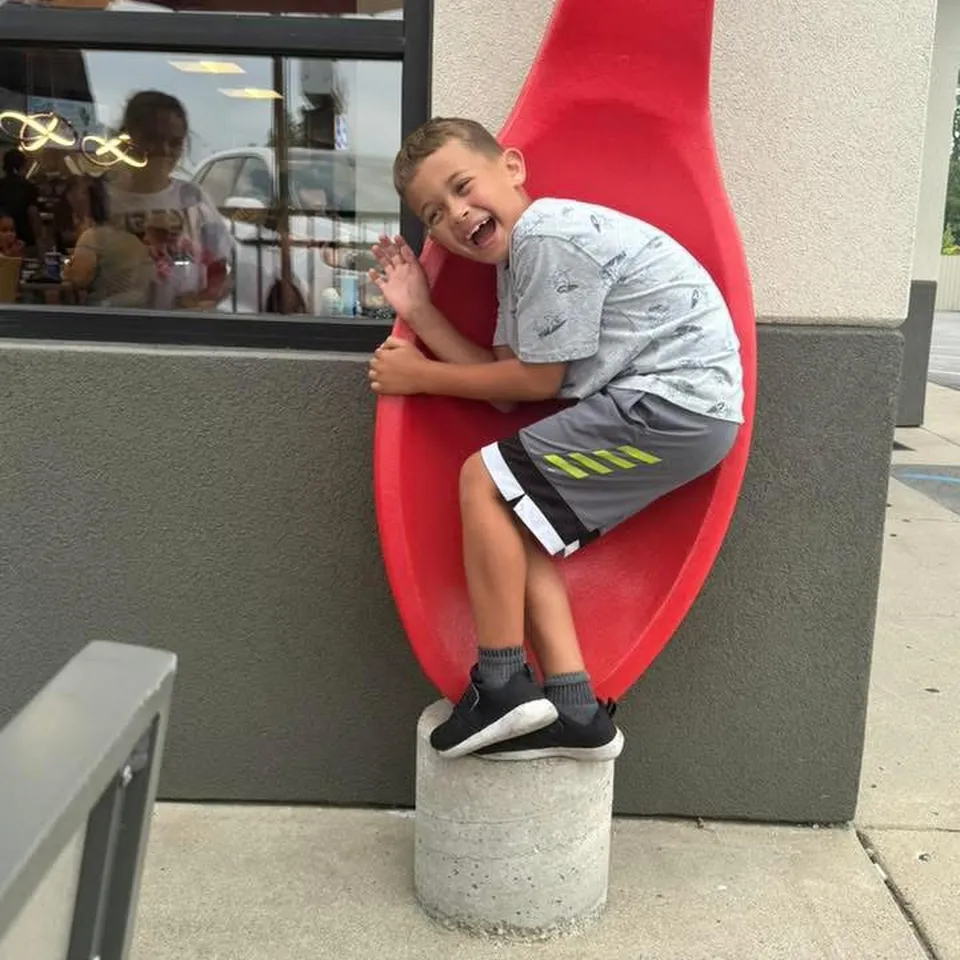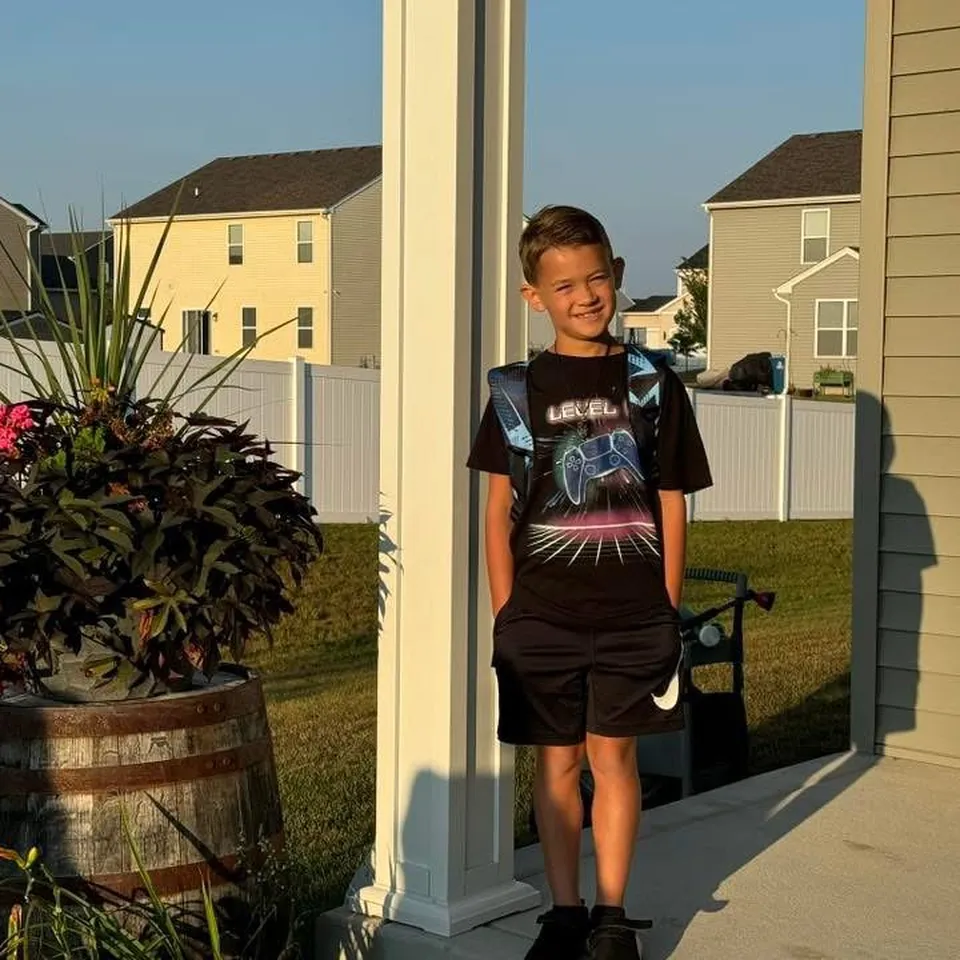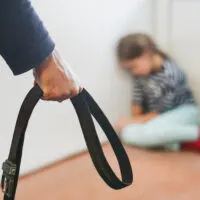Every parent knows the routine. A child comes home from school complaining of a headache, and you reach for the children’s pain reliever, suggesting some rest. It’s such an ordinary part of childhood that most families barely give it a second thought.
But for one Indiana family, what seemed like the most common of childhood complaints became the beginning of an unimaginable nightmare. Within 24 hours of that single symptom, eight-year-old Liam Dahlberg would be gone, claimed by a bacterial infection so aggressive that modern medicine couldn’t save him.
Liam’s story serves as a stark reminder that sometimes the most ordinary symptoms can mask extraordinary dangers. What his mother initially dismissed as a typical childhood ailment was the first sign of a bacterial invasion that would prove unstoppable once it began its deadly march through his young body.
As vaccination rates decline across the country and parents debate immunization policies, Liam’s death has become a rallying cry for those who understand just how quickly preventable diseases can turn fatal. His mother’s grief has transformed into a desperate mission to ensure no other family endures what hers did.
Just Another School Day That Changed Everything
April seemed like any other month for the Dahlberg family in Lowell, Indiana. Eight-year-old Liam was thriving in third grade at Lake Prairie Elementary School, known as a bright, smart boy full of life and potential. He brought joy and warmth to everyone he met, the kind of child who made ordinary days feel special.
When Liam came home from school that fateful day complaining of a headache, his mother, Ashlee Dahlberg, thought nothing of it. Headaches are among the most common complaints children have, often related to dehydration, eye strain, or simply the exhaustion that comes with a full day of learning and playing.
But the next morning revealed that something was wrong. Liam, usually lively and upbeat, had become delirious at moments. His condition was deteriorating rapidly, and Ashlee knew they needed medical help immediately. She rushed her son to the hospital, hoping doctors could quickly identify and treat whatever was affecting him. Nothing could have prepared her for what they would discover.
Doctors Deliver the Unthinkable Diagnosis

Medical staff quickly realized they were dealing with something far more serious than a typical childhood illness. An MRI revealed the horrifying truth: bacteria were covering Liam’s brain and spinal cord completely. What started as a simple headache had become a race against time that medicine was already losing.
Doctors diagnosed Liam with Haemophilus influenzae type b, also known as “H. flu” or “Hib.” Despite its name suggesting a connection to influenza, this bacterial infection bears no relation to the common flu virus. Instead, it represents one of the most dangerous bacterial threats to children, capable of causing devastating complications within hours.
“They took him to an MRI. That’s when they discovered the amount of bacteria that was covering his brain and spinal cord,” Ashlee later recalled. “Basically at that point in time, there was nothing they could do.”
Hib infections can become “invasive,” spreading to parts of the body typically protected from germs. When the bacteria reach the brain and spinal cord, they cause meningitis, an inflammation of the protective membranes surrounding these vital organs. At this stage, even aggressive antibiotic treatment often proves insufficient to save lives.
How 24 Hours Became a Countdown to Death

Medical experts explain that invasive Hib infections progress with terrifying speed. Once bacteria enter the bloodstream, they can spread throughout the body within hours, attacking organs and systems faster than treatments can respond.
In Liam’s case, the infection had already progressed too far by the time symptoms became obvious. What began as a mild headache had become a full-scale bacterial assault on his central nervous system. The damage occurred so rapidly and extensively that recovery became impossible.
“Anybody that contracts it usually dies within 24 hours,” Ashlee would later explain, her voice breaking as she described watching her son’s condition deteriorate before her eyes.
Liam was declared brain dead within 20 hours of his first symptoms appearing. For a family that had gone to bed thinking their child had a simple headache, the speed of his decline felt surreal and devastating.
Mother’s Heartbreaking Final Moments with Her Son
No parent should ever have to decide to remove their child from life support, but that’s precisely where Ashlee found herself less than a day after Liam first complained of feeling unwell. Medical staff had done everything possible, but the infection had caused irreversible damage to his brain.
“I would never wish this kind of pain on my worst enemy ever. It’s hard,” Ashlee said through tears. “To have sat there and listened to the doctors say, ‘You did everything right, there’s just nothing we could do,’ to lay there with him as they took him off life support, I can feel his little heartbeat fade away — there’s no words that can describe that pain.”
The medical team’s words offered little comfort to a grieving mother. Despite following all recommended healthcare guidelines and seeking treatment as soon as symptoms worsened, there had been nothing anyone could do to save Liam once the infection reached his brain and spinal cord.
In those final moments, Ashlee held her son close, feeling his heartbeat gradually slow and then stop. The child who had filled their home with laughter and energy was gone, claimed by a bacterial infection that most people had never heard of.
Vaccination Couldn’t Save Him from an Unvaccinated Classmate

Adding to the tragedy was the revelation that Liam had been fully vaccinated against Hib as part of his routine childhood immunizations. The vaccine, typically given in three doses to babies, provides about 95% protection against serious infections.
However, doctors believe Liam caught the infection from an unvaccinated child at school who was carrying high levels of the bacteria. While vaccines are highly effective, they cannot always protect against exposure to massive bacterial loads from carriers who harbor the organism in their respiratory systems.
Dr. Eric Yancy, a pediatrician familiar with Hib infections, explained that vaccinated children remain vulnerable when vaccination rates in their communities decline. “Over the last few years, the immunization rates have continued to fall,” he noted, creating gaps in community protection that put even vaccinated children at risk.
Hib bacteria live naturally in the noses and throats of many healthy people, spreading through respiratory droplets when people cough or sneeze. Carriers can transmit the infection without showing any symptoms themselves, making it impossible for parents to identify potential sources of exposure.
Before Vaccines, This Bacteria Was a Child Killer
To understand the true magnitude of this tragedy, it’s essential to recognize the devastating impact of Hib infections before vaccines became available. Dr. Yancy recalls the pre-vaccine era as “absolutely devastating,” explaining that “if it didn’t kill the children within a very short period of time, it left many of them with significant complications.”
Before the Hib vaccine was introduced in 1985, approximately 20,000 children in the United States developed serious infections each year. About 1,000 of those children died, while many survivors were left paralyzed, deaf, blind, or mentally impaired for life.
The vaccine’s introduction represented one of the most significant public health achievements in modern medicine. Infection rates dropped by more than 99% between 1991 and 2019, with only 0.15 cases of Hib disease per 100,000 children under the age of 5 reported by 2019.
In 2024, fewer than 50 cases were reported nationwide—a testament to the effectiveness of vaccination in protecting children from this deadly bacterium.
How Deadly Bacteria Hides in Plain Sight
View this post on Instagram
What makes Hib particularly dangerous is its ability to exist harmlessly in healthy people while remaining capable of causing fatal infections in others. The bacteria commonly colonize the nose and throat without causing symptoms, creating a reservoir of potential transmission sources.
Under certain conditions—such as a weakened immune system or concurrent viral infection—Hib can escape its normal boundaries and enter the bloodstream. Once in circulation, it gains access to organs throughout the body, including the brain and spinal cord, where it can cause devastating damage.
Young children and elderly adults face the highest risk of developing invasive infections, partly because their immune systems may be less capable of containing bacterial spread. Even healthy, well-nourished children can develop life-threatening complications if exposed to sufficient bacterial loads.
Falling Vaccination Rates Put More Children at Risk
Liam’s death occurs against a backdrop of declining vaccination rates across the United States. Growing vaccine hesitancy, fueled by misinformation and distrust of public health recommendations, has created gaps in community protection that endanger vulnerable children.
When vaccination rates fall below critical thresholds, herd immunity breaks down, allowing dangerous bacteria and viruses to circulate more freely through communities. Unvaccinated children become carriers who can transmit infections to others, including vaccinated children whose immune systems may not mount sufficient protection.
Religious and philosophical exemptions to school vaccination requirements have contributed to declining immunization rates in many communities. These policies, intended to respect parental autonomy, can have deadly consequences for children who cannot be vaccinated due to medical conditions or whose vaccines fail to provide complete protection.
Grieving Mother Launches Campaign to Protect Other Families

Rather than retreating into private grief, Ashlee has channeled her pain into advocacy for stronger vaccination policies. She created a Change.org petition calling for the elimination of religious exemptions for school immunizations, arguing that public health must take precedence over individual beliefs.
“We must act swiftly and decisively to prevent further tragedies,” she wrote in her petition. “Ensuring that all children in public schools are vaccinated, barring medical exemptions, protects not only those children but all members of society.”
Her campaign reflects a mother’s desperate desire to ensure other families never experience the loss she has endured. By sharing Liam’s story publicly, she hopes to educate parents about the real risks of vaccine-preventable diseases and the importance of maintaining high vaccination rates.
Why One Mother Blames Herself for the Unpreventable
Despite doing everything medical experts recommend, Ashlee struggles with feelings of guilt and failure. “I feel like I have failed my child because I could not protect him from everything that would cause harm,” she said, expressing the self-blame that many parents experience after losing a child to preventable disease.
Her feelings highlight the cruel irony of vaccine-preventable deaths: even parents who follow all recommendations can lose children when community vaccination rates decline. Individual protection depends on collective action, making every family’s vaccination decisions a matter of public health importance.
Liam’s death serves as a stark reminder that in our interconnected world, the health choices made by one family can have life-or-death consequences for others. As vaccination rates continue to decline and preventable diseases resurge, more families may face the unthinkable loss that has forever changed the Dahlberg family.
Through her advocacy and willingness to share her story, Ashlee hopes to spare other parents the indescribable pain of losing a child to a disease that vaccines could have prevented. Her message is simple but urgent: protect all children by ensuring your own are fully vaccinated.
Featured image source: GoFundMe (Support for William’s Medical Costs)



